상사에게 연락하세요
서둘러 닫지 마시고, 사장님께 직접 말씀하세요. 깜짝 놀랄 만한 일이 생길 거예요.



1900명 이상의 사용자
완료된 사용자 서비스
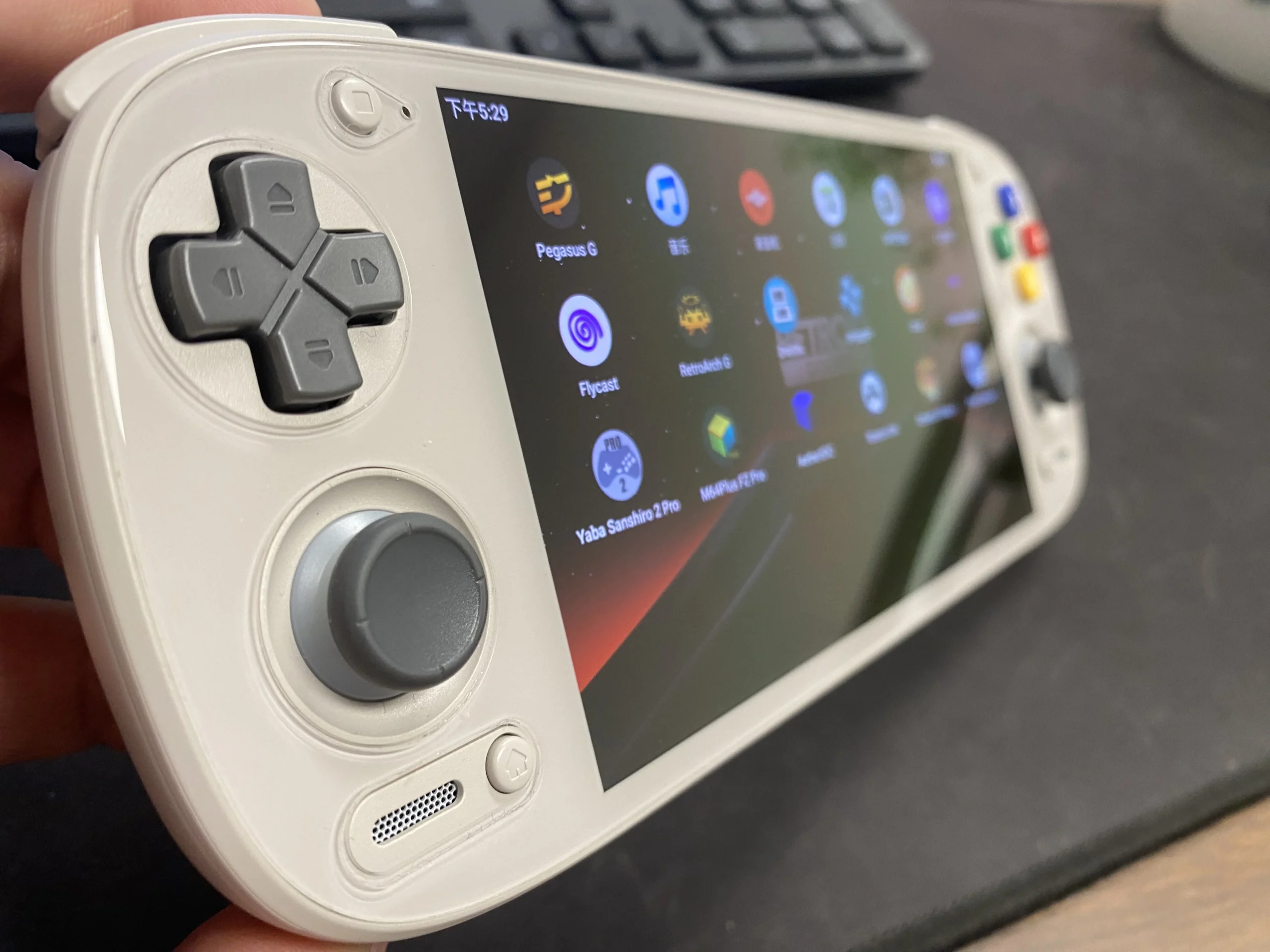
As the fifth generation of the Retroid Pocket handheld digital series, both the Retroid Pocket 5 그리고 레트로이드 포켓 미니 utilize Qualcomm’s Snapdragon 865 SOC, featuring a 4-core A77 + 4-core A55 CPU and Adreno 650 GPU.
Although the Snapdragon 865 is considered an older flagship SoC from a mobile phone perspective, it is still a very capable SoC in the retro handheld space. It can meet the performance requirements of various retro emulators besides the 닌텐도 스위치 2. The main specifications of the 레트로이드 포켓 5 are as follows:

The SOC has been upgraded from Dimensity 1100 to Qualcomm Snapdragon 865. Although the theoretical performance improvement is not significant, the compatibility of most simulators is obviously more advantageous over the Qualcomm platform, and the appearance is brand new.
2.5D 협폭 유리 일체형 패널은 외관 가치가 더 높고, 더 큰 화면이 압축되어 있지만 기기의 전체 크기는 크게 변하지 않습니다(길이만 약간 길어질 뿐입니다).
OLED는 색재현율과 명암비가 더 뛰어나고, 고스팅 현상도 없습니다. (응답 속도가 LCD의 수~수십 밀리초에서 OLED의 0.1밀리초 수준으로 향상되었습니다.) 개인적으로는 비교적 포괄적인 업그레이드라고 생각합니다.
Compared to the previous Retroid Pocket, 그 레트로이드 포켓 5 has made significant strides in build quality and design, featuring a fully integrated front cover.
기기의 전체적인 디자인은 매우 잘 통합되어 있으며, 화면 베젤은 덮개 아래에 교묘하게 숨겨져 있습니다. 더 큰 5.5인치 화면은 얇은 베젤을 가진 Retroid Pocket 4P(4.7인치)와 비슷한 높이의 본체에 들어맞습니다.
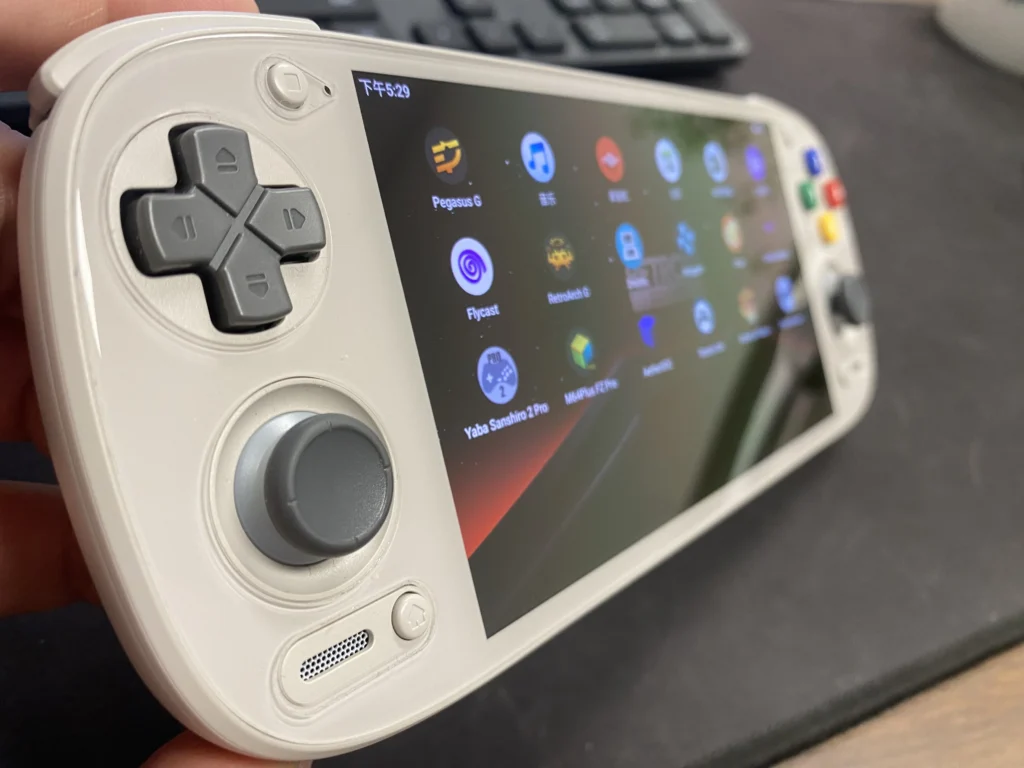
화면 측면에서 이 OLED 화면은 매우 훌륭해 보이지만, Android 13의 테마가 분홍색이라는 점, 그리고 드롭다운 메뉴 바에서 화면이 빨간색으로 잘못 인식될 수 있다는 점(실제 화면 색온도는 약간 차갑습니다)에 유의해야 합니다. 이는 Android 13 시스템 자체의 고유한 문제입니다.
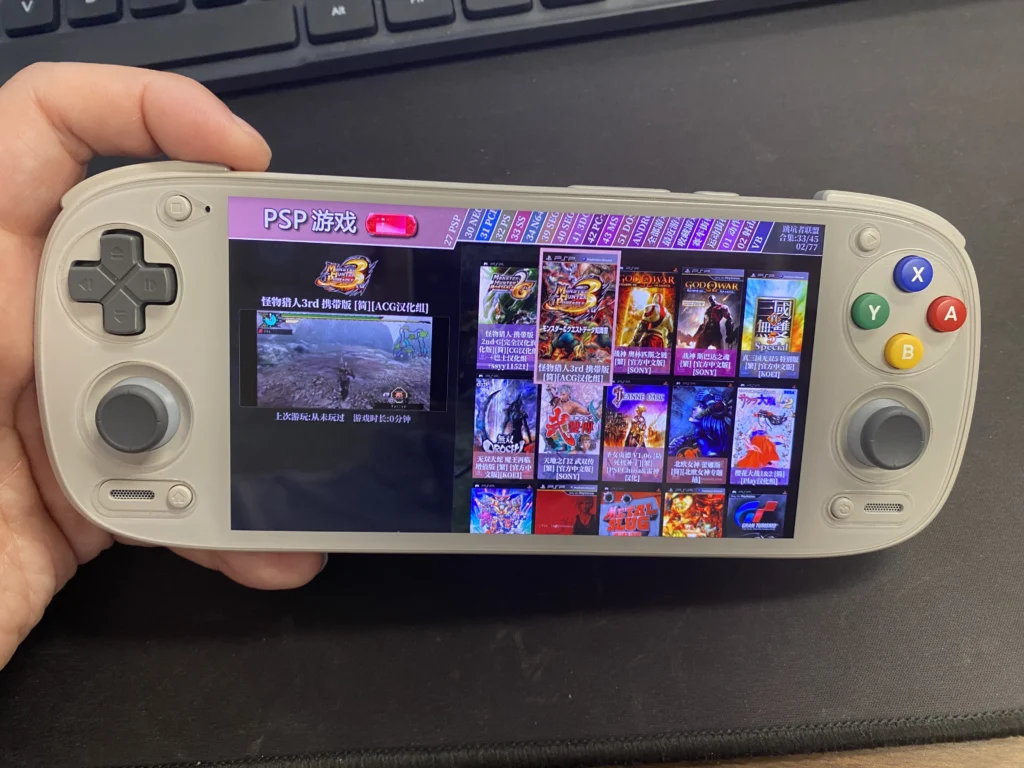
앞 버튼 부분은 닌텐도의 ABXY 배열이지만, 레이아웃은 상단에 십자 키, 하단에 듀얼 조이스틱, 좌측 상단에 SELECT 버튼, 우측 상단에 START 버튼, 좌측 하단에 Android 홈 버튼, 우측 하단에 Android 리턴 버튼이 있습니다.
강화 유리 필름이 랜덤으로 제공되며, 버튼, 조이스틱, 마이크, 스피커 위치는 모두 구멍으로 디자인되어 있습니다. 이 천공 강화 유리 필름의 가격은 매우 높습니다. 담당자는 통합 전면 패널에 맞게 이 강화 유리 필름을 맞춤 제작하는 데 비용을 투자했어야 합니다.
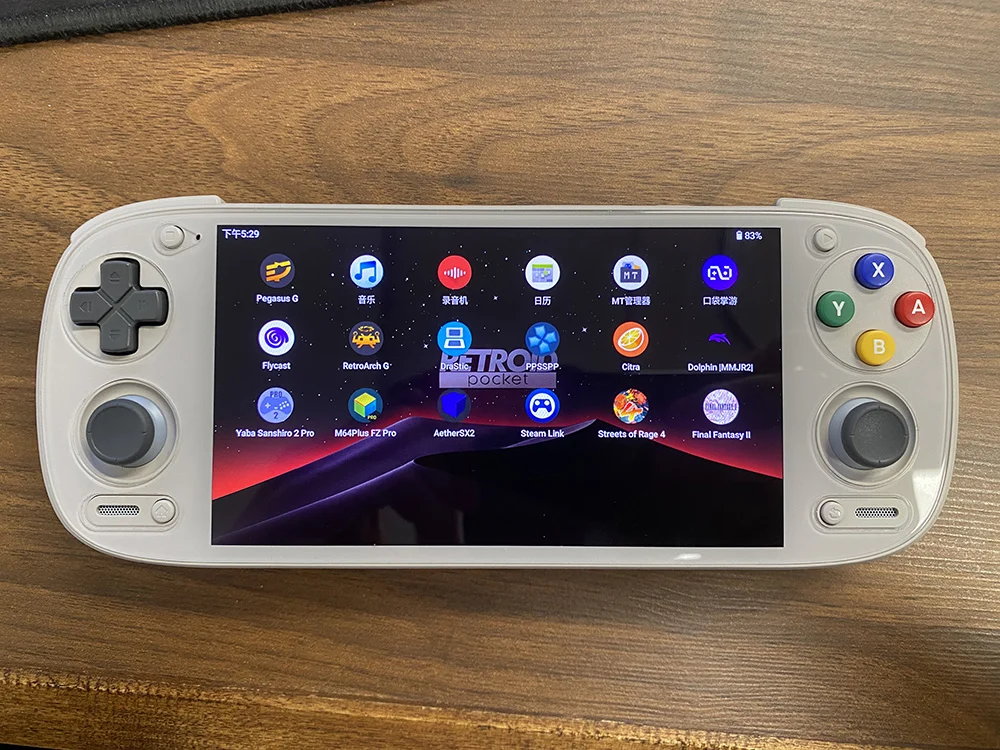
The buttons actually follow the Retroid Pocket 4’s design, with a crisp cross-pad and a slightly stiff ABXY pad. The joystick likely uses the same Hall effect stick as the previous model.
조이스틱 하단에 RGB 조명이 숨겨져 있는데, 저는 개인적으로 회색 계열을 선호해서 켜 두었습니다. 좀 더 부드러운 ABXY 패드가 더 편할 것 같습니다.
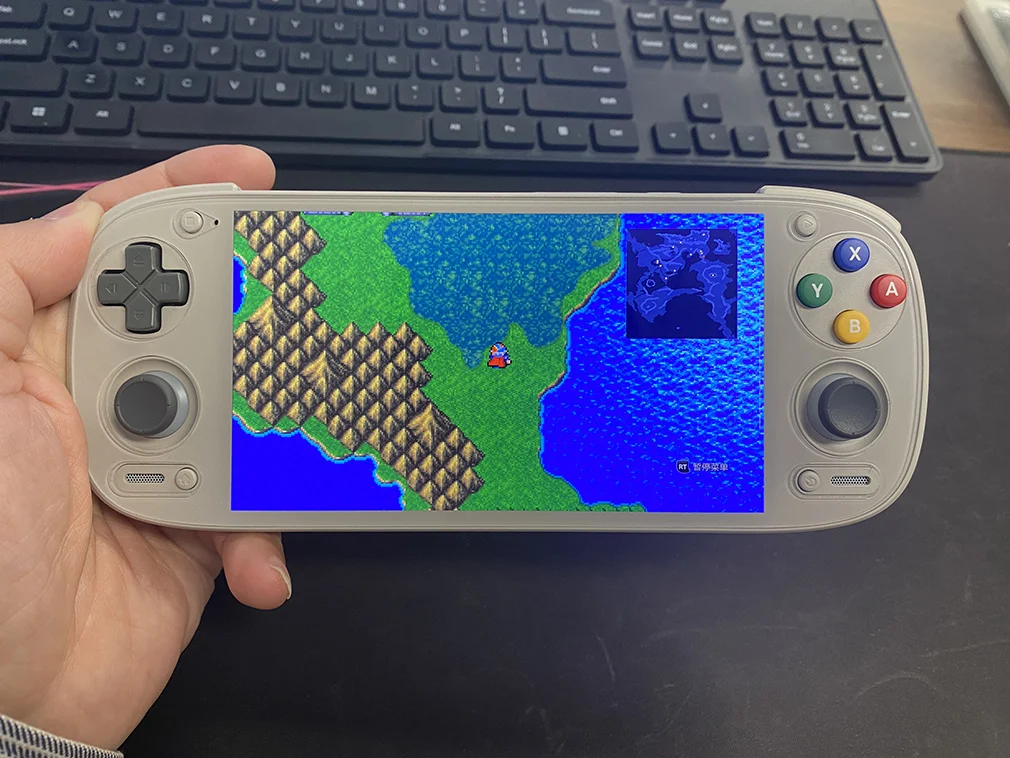
▼ABXY 레이아웃은 교체가 가능하기 때문에 버튼 부분이 별도의 원형 영역으로 분리되어 전면 패널과의 일체감이 떨어집니다. 개인적으로는 완전히 통합된 회색으로 만들면 더 보기 좋을 것 같습니다.
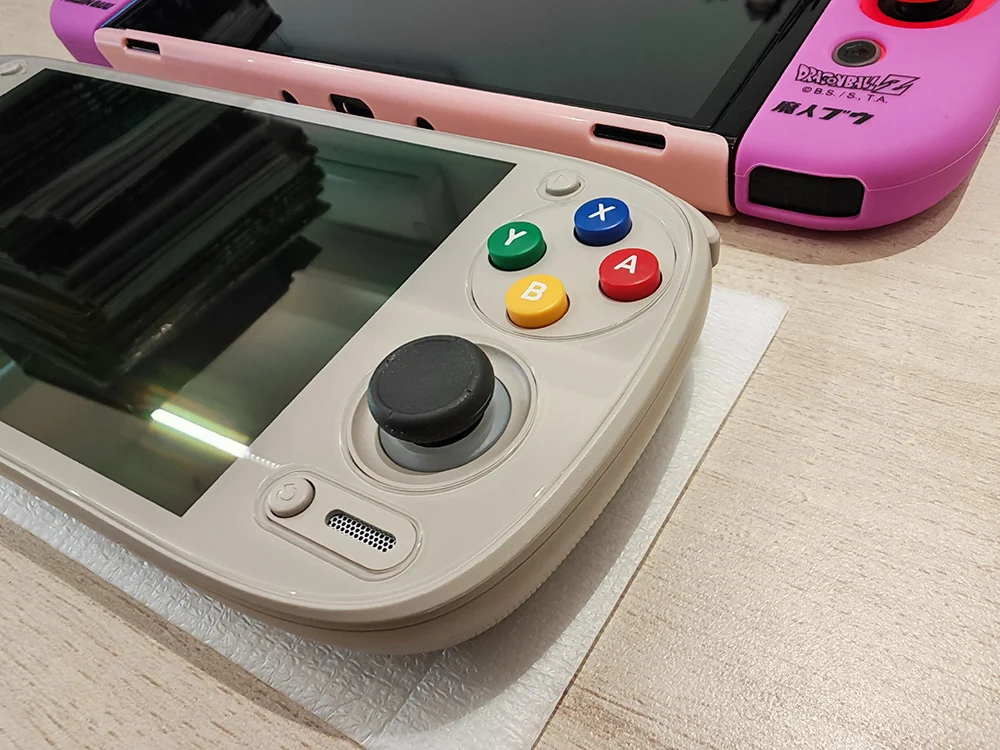
그만큼 레트로이드 포켓 5 was one of the handheld game consoles that caught my attention the moment it was announced. After all, for a high-performance machine, the Odin 2 offers exceptional value, even today.
하지만 더 얇고 가벼운 핸드헬드 경험을 원하는 사람들에게는 Odin 2와 Odin 2 mini의 무게와 크기가 만족스럽지 않습니다. 레트로이드 포켓 5 중간 크기의 화면과 가벼운 디자인을 결합하여 이러한 차별화된 틈새 시장을 완벽하게 포착했습니다.
성능 측면에서 Qualcomm의 Snapdragon 865 SoC는 이전 세대보다 충분히 적합합니다. 닌텐도 스위치 플랫폼. 통합 전면 패널 디자인은 미학적으로 만족스럽고 고품질 5.5인치 좁은 테두리 OLED 패널과 결합되어 레트로이드 포켓 5 이전 모델인 Retroid Pocket 4P에 비해 진정한 "종합적인 업그레이드"입니다.
크기, 무게, 배터리 수명의 균형과 좋은 성능을 갖춘 장치를 찾고 있다면 레트로이드 포켓 5 is a good choice. The official front-end is still being updated, and the open source community will soon be adapting it to Linux, ensuring immediate playability. The 레트로이드 포켓 5 is also quite playable.